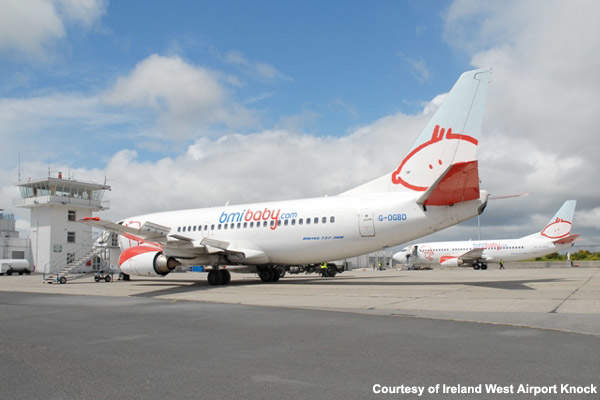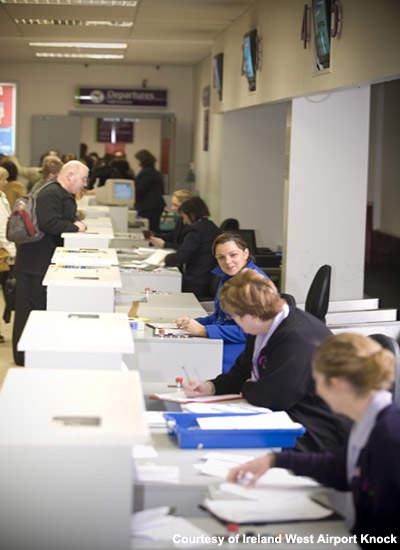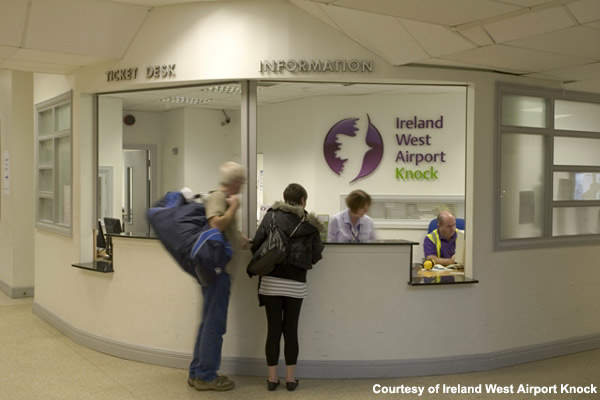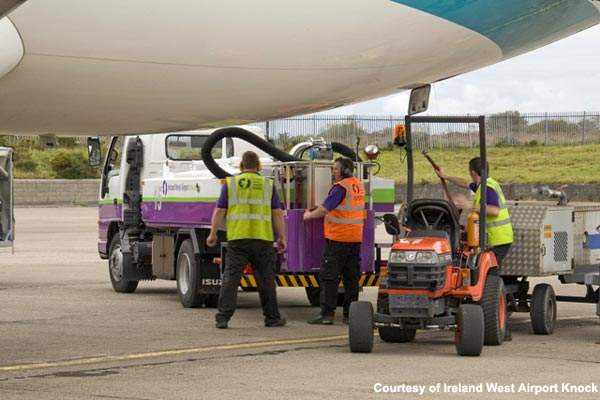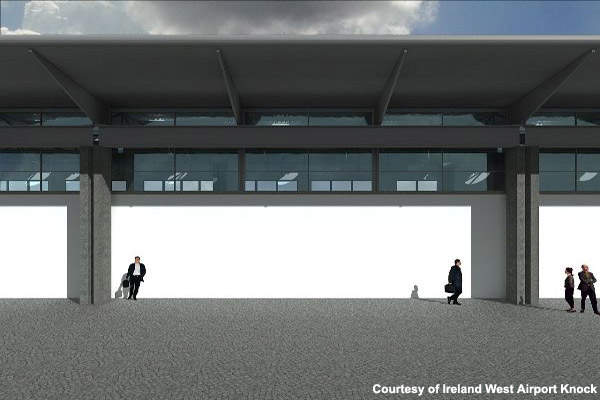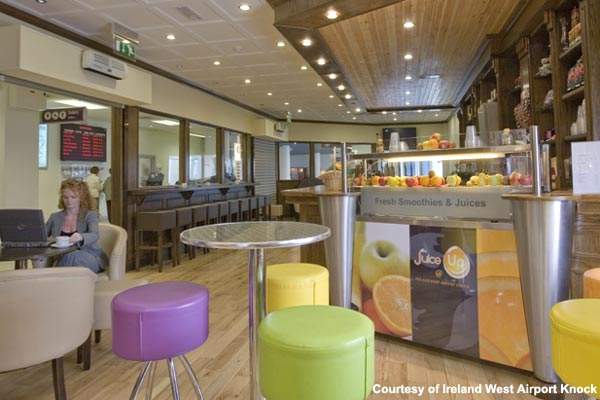Ireland West Airport Knock (Aerfort na Connacht) in County Mayo was first opened as Knock Airport in 1986 due to the efforts of Monsignor James Horan who believed an airport was needed in the area so that pilgrims could visit a nearby Catholic shrine.
Since opening over 20 years ago the airport, situated 5.6km south of Charlestown, has gone from strength to strength and has become a major transport hub in the area allowing business development and tourist traffic to the area as well as serving thousands of pilgrims.
In 2007, around 557,000 passengers used the airport, which is a reduction of around 9% since 2006 (621,000) so that Ireland West is the only airport in Ireland to record a reduction in passenger numbers during the period. The passenger traffic, however, increased to 629,000 in 2008 with a growth of 13% over 2007. Again in 2009, the traffic decreased to 607,005 passengers.
The airport has seen several airlines operate routes to destinations across the UK only to see them withdrawn in a short space of time. However, a new range of destinations were also introduced.
Although the runway (09/27) is only 2,300m (7,546ft) long, the airport has several times played host to aircraft as large as the Boeing 747. The airport is owned and operated by Connaught Airport Development Company Ltd and serves west and Northwest Ireland with passenger services by Aer Arann (Dublin), bmibaby (Birmingham, Glasgow International and Manchester), Ryanair (Bristol, East Midlands, London-Luton and London-Stansted) and XL Airways, as well as charter flights by a range of other operators. Ryanair has the largest number of flights with nine scheduled routes.
Master plan
The development of the airport is planned to continue until 2030. It includes the upgrade of taxiway system, terminals and cargo facilities. Additional ground handling, safety and security systems will be installed.
Additional runways and aprons will be constructed and new transportation links developed.
The apron will be completed in two phases. Phase 1, which is scheduled for completion in 2010, includes three additional aircraft stands. Phase 2 is planned for 2011 and 2012. It will increase the apron capacity to accommodate more aircraft and passengers.
The airport also plans installation of a CAT 1 ILS on runway 09 in 2010-2011.
Ireland West development
In February 2007 the Irish Government decided to grant €27m to the airport. The money was used to assist with the improvements made in the infrastructure (the current infrastructure investment programme is worth some €46m).
In March 2009, an extension to the Runway Ends Safety Area (RESA) at either end of 09/27, a new runway turn-pad and expansion of car-parking facilities were completed. Runway 09/27 also received an upgrade of systems to category II Instrumentation Landing Systems (CAT II ILS) to allow low-visibility operations.
At the end of 2007 some infrastructure projects had been completed including a new perimeter fence and an access road. The main contractor for these initial works was Frank Harrington Ltd.
Terminal development
Expansion of the terminal building took place in phased manner with an investment of €5.5m. The contract was awarded to John Sisk & Sons. In February 2008 Ireland West Airport Knock also received planning permission for the first phase of development of the airport terminal building (following an appeal against the project in September 2006).The expansion was completed in 2009 and the terminal was named as Kennedy Terminal.
The expansion of the terminal building included a new security screening area, an expanded check-in hall, additional departures capacity and services and enhancements to the baggage sorting facility.
Knock airport security
Ireland West Airport Knock announced in January 2008 that a full complement of Garda would now be on duty at the airport at all times. The new security arrangements came into effect at the end of March 2008.
The Garda unit will consists of one Sergeant and seven Garda; who will operate from a station in the main concourse. The new development also means a full-time immigration unit for the airport which will be essential for future route expansions.

